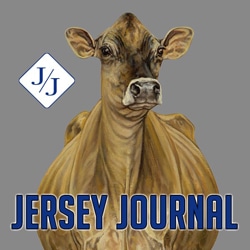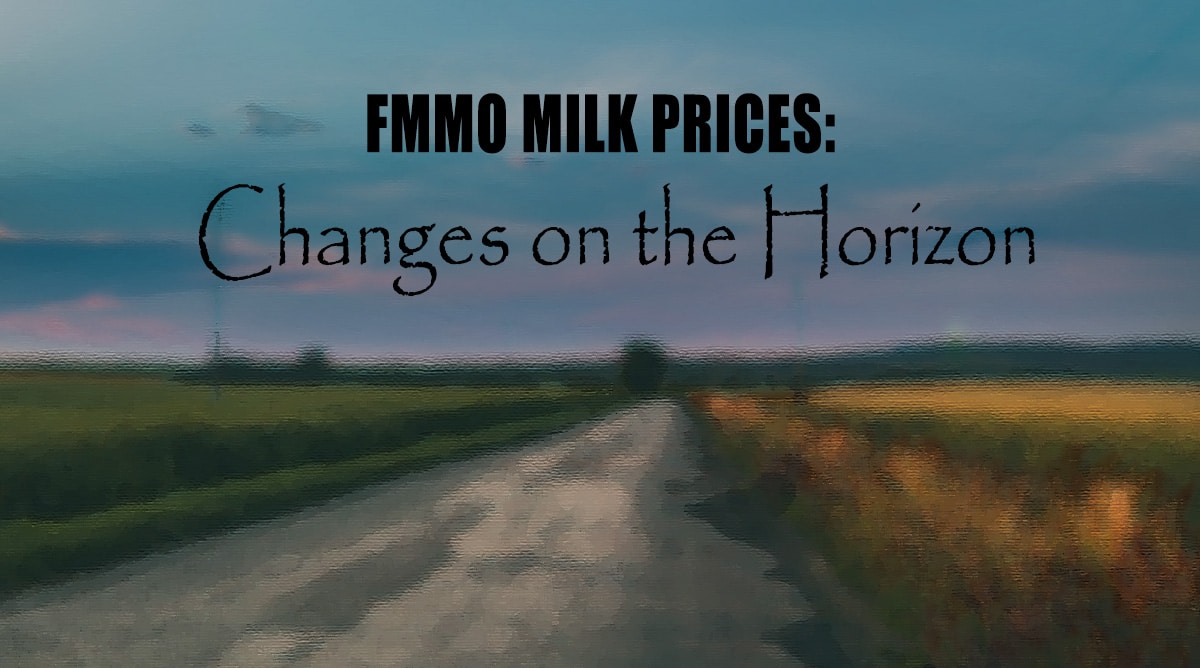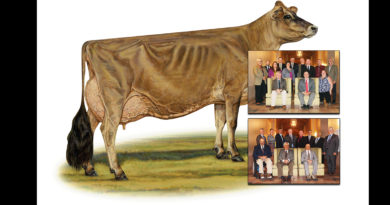Changes on the Horizon for FMMO Prices
Excerpts from the report of Erick Metzger, General Manager National All-Jersey Inc. (NAJ), at the 65th Annual Meeting of the organization on June 23, 2023, in La Crosse, Wis.
What a difference a year can make. The dairy situation today looks very different than it did in 2022. And it is likely to look very different next year with the outcome of the upcoming Federal Milk Marketing Order (FMMO) hearing.
When we met in Portland a year ago, milk prices were extremely high. Blocks and barrels were trading on the Chicago Mercantile Exchange (CME) for more than $2 per pound. Butter was a near-record price of $3 per pound and hit a historical high of $4 several months later. Federal Order Class III milk was over $25 per hundredweight and Class IV was a penny shy of $25.
Yesterday, blocks were trading at $1.41 per pound and barrels were $1.50. Class III milk was $16.11 per hundredweight, $2 less than the Class IV price of $18.10. USDA announced the July Class I mover at $17.32, the lowest it has been since October 2021.
Production Up, Demand Down
Two factors have contributed to the change: production is up, and demand is down.
Production began to creep up in July 2022 and has persisted for nearly a year. The monthly year-over-year gains are not large, with no month exceeding 1.7% growth. But they have been consistent and add up.
Much of the growth has come in the upper Midwest. The states of Wisconsin, Minnesota, South Dakota, and Iowa have a combined production of nearly 100 million pounds more milk in May 2023 versus the year prior. The glut must be processed somewhere, and it will be done cheaply. The USDA Dairy Market News reported spot loads of milk selling for $3.50 per hundredweight, a full $12 under the Class III price. When spot loads sell for that price, a lot of inexpensive cheese enters the market and drives the CME commodity prices to the levels we have seen in recent months.
In Europe, our export competitor, production is up as well. But their prices are falling too, down 20-30% versus last year. Experts predict production will soon start to decline, which will affect the global marketplace.
Demand is tepid at best. Through April, domestic cheese consumption was up 1% and butter gained 6% versus last year, but the U.S. consumes much less butter than cheese. These consumption gains are not keeping pace with production.
Exports, which have been a bright spot for the dairy economy in recent years, paint a clear picture of the predicament. In April, year-over-year export demand declined more than it has in four years. Volume was down 13% on a milk solids equivalent basis and value was down 17%. With 18% of milk solids being exported, the 13% drop equates to about 2.3% of total domestic production. Year-to-date, volume is down 0.3% and value is down 3%.
The Global Dairy Trade Auction, conducted the first and third Tuesday of each month, provides some insight on our ability to export in the coming months. In the June 19 sale, butter was $2.44 per pound. At that price, the U.S. will not likely be an exporter, but not an importer either. Cheese was $2.06 per pound. This is a difficult commodity to predict because most export orders are contracted in advance. Nonfat dry milk was $1.21, a tad higher than the CME price, which should position to U.S. as an exporter of nonfat dry milk, our #1 dairy export product.
Margins on the Dairy
In April, the Dairy Margin Coverage program was $5.84 income over feed cost and is expected to be about the same for May and June. For dairy farmers enrolled in the program, this equated to about $2,700 for each one million pounds of production at the $9.50 income over feed costs level.
The Dairy Revenue Protection program paid out $126 million in the first quarter and will certainly pay out more in the second quarter.
A bright spot for dairy producers is strong cull prices. Currently, beef and Holstein cull cows are selling for about $1,250 per head. Those prices should start moving cows to the market and decreasing overall milk production.
Looking ahead, futures for Class III and Class IV milk are over $18 per hundredweight starting in October. New crop corn is $6 per bushel and new crop beans are near $14. The weekly crop report showed 55% of corn is rated good or excellent, down 15% from last year, and 54% of soybeans are good or excellent, down 14% from last year.
FMMO Hearing
An issue that will have tremendous impact on the dairy industry in the coming years is the national FMMO hearing. The National Milk Producers Federation is proposing the following changes to update and modernize the FMMO system:
1. Returning to the “higher of” Class I mover,
2. Discontinuing the use of barrel cheese in the protein component price formula,
3. Updating milk component factors for protein, other solids and nonfat milk solids in the Class III and Class IV skim milk price formula,
4. Updating dairy product manufacturing allowances contained in the USDA milk price formulas, and
5. Updating the Class I differential price system to reflect changes in the cost of delivering bulk milk to fluid processing plants.
NAJ looked at those priorities, with special interest in the third. Currently, the Class III and Class IV skim price formulas are based on 3.1% protein and 5.9% other solids. Class IV is based on 9.0% nonfat solids. Those factors have been in place since 2000, when Federal Order Reform was implemented. A lot has changed in the past 23 years. Overall prices are largely unaffected because manufacturing processors pay on a pounds of protein and solids basis. However, the price paid for Class I milk is affected because it is the average of the Class III skim price and the Class IV skim price plus $0.74 per hundredweight.
NMPF proposes to update the skim factors every three years based on the previous three-year average, with figures of 3.35% protein, 6.01% other solids and 9.36% nonfat solids. In 2022, the component factors resulted in a Class I skim value of $13.03 per hundredweight. The NMPF proposal would yield a price of $13.54. When 40 billion pounds of milk is pooled on an annual basis, the 50-cent difference is significant.
NAJ submitted three proposals to USDA:
1. Update the skim solids factors in the Class III and Class IV formulas annually,
2. Extend multiple component pricing to all FMMOs, and
3. Price Class I milk on actual components.
In all, USDA, received 38 proposals from 12 organizations, including the three from NAJ. Several included interesting approaches. Farm Bureau and the Edge Co-op, the #3 cooperative in the country on a volume basis, proposed to delay the hearing until the Farm Bill is complete, require mandatory processing plant surveys to determine costs, eliminate advance pricing of Class I milk, and improve transparency in milk checks. The International Dairy Foods Association (IDFA) proposed an updated cost study conducted by Dr. Stephenson be used to update make allowances in a phased in approach. IDFA also proposed to floor the Class I mover adjuster of $0.74.
No matter what is determined, dairy producers will not see changes in their milk checks for a while. USDA will announce which proposals will be included in the hearing in late July. The hearing will begin in late August and, by statute, wrap up in October. The dairy industry will have 60 days to file post-hearing briefs (December) and then USDA will have 90 days to issue its recommended decisions (March 2024). Industry comments are due 60 days later (May), and USDA issues its final decisions 60 after (July). USDA then conducts a producer referendum in which producers and cooperatives either approve or not approve the decision through a vote. If approved, USDA announces when the modifications will become effective.
As always, NAJ thanks Equity members for their contributions and support of Project Equity. To stay abreast of news that affects Jersey producers and milk pricing, sign up for the quarterly NAJ Equity Newsletter or the NAJ Weekly Market Update.
Editor’s Note: Since the NAJ Annual Meeting in June, USDA has taken the first step in the hearing process by setting a hearing date and announcing proposals for which testimony will be heard. The hearing is scheduled to begin on August 23, 2023, in Carmel, Ind.
Testimony from 22 proposals will be heard, including the NAJ proposal to update the skim solids factors in the Class III and Class IV formulas annually. The other two NAJ proposals were not accepted.
The Notice to Trade published on July 24 can be found here.




